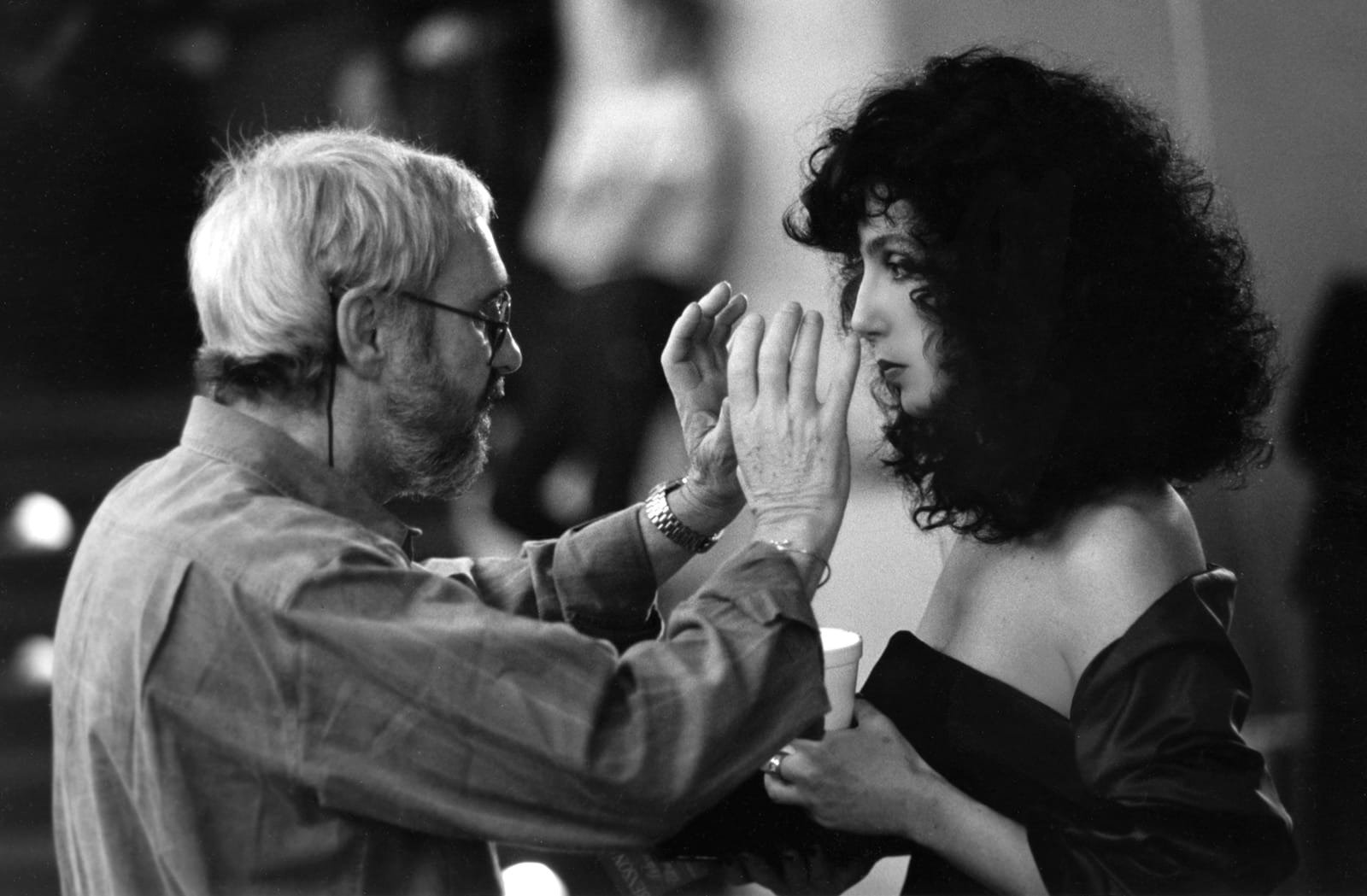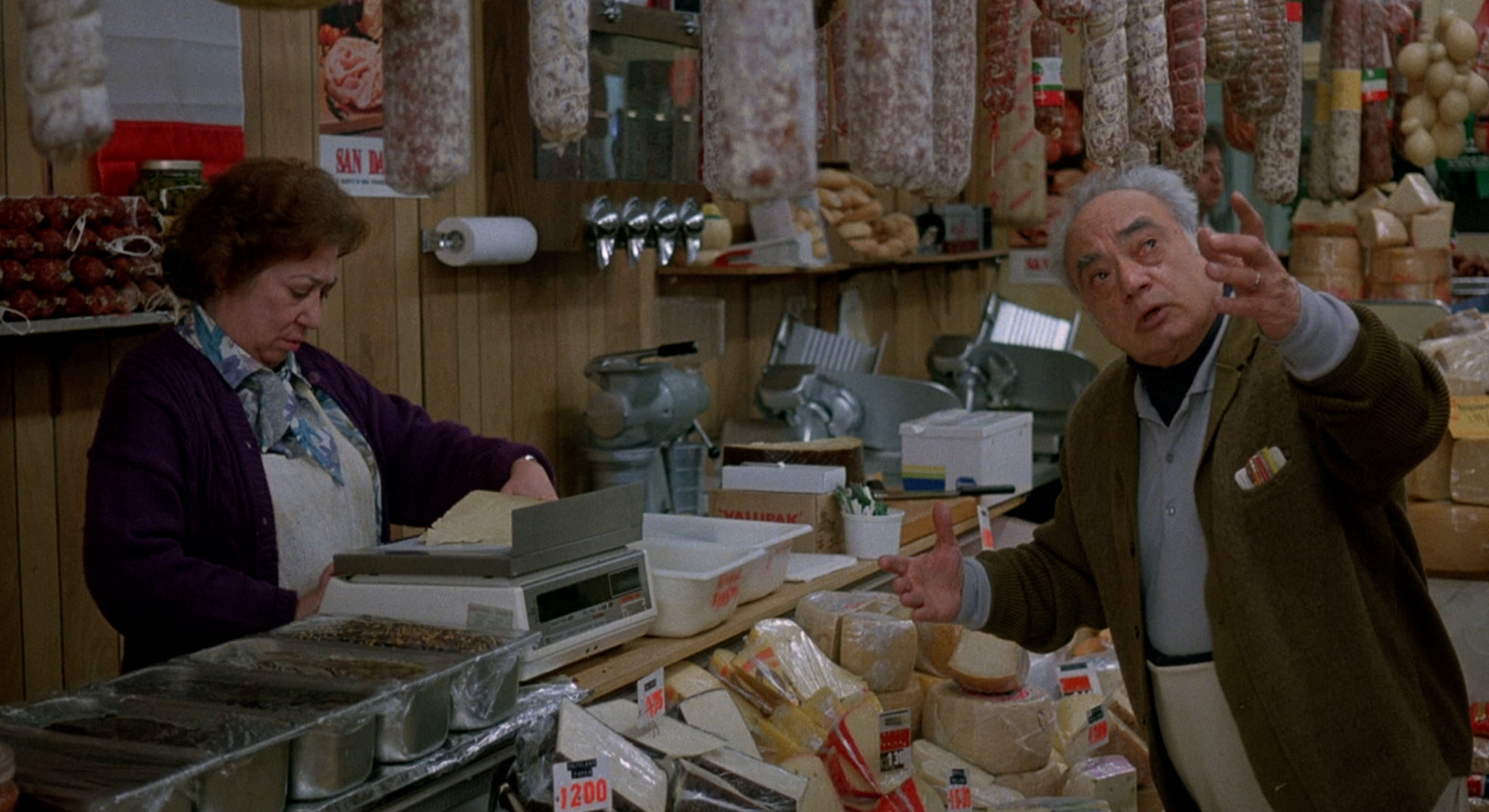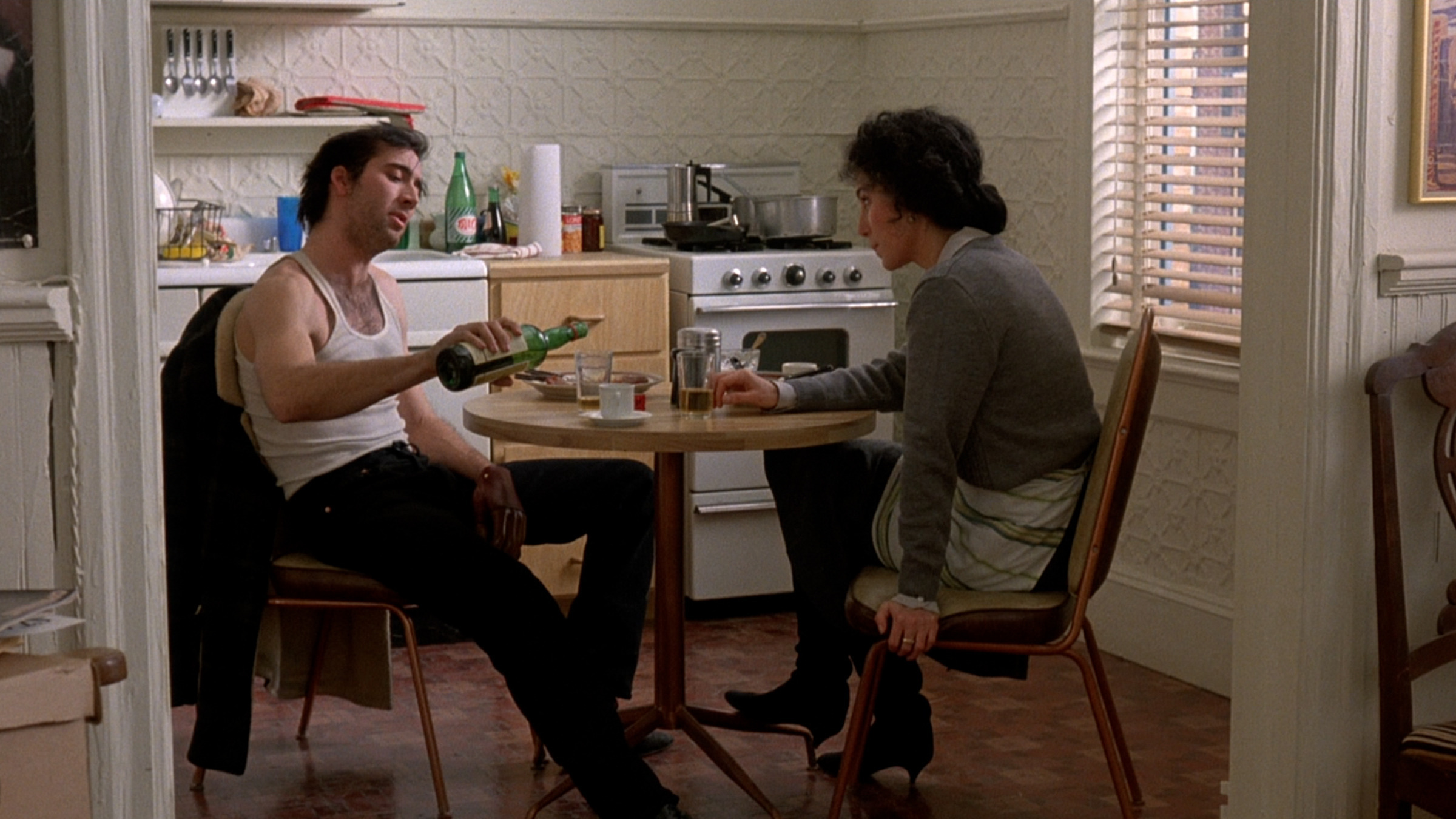Moonstruck: Life in the In-Between

For most of my life, makeover sequences in film comedies held an irresistible allure. The mousy young woman who realizes her own inner and outer (but mostly outer) beauty after receiving the attentions of the right man (or the right makeup team) appealed on some core level I could not quite explain. Nor did I want to try to explain it. It felt too close to some deeply buried piece of myself, a sense of longing for what one might become if one found oneself in a fairy tale.
Loretta Castorini finds herself in a fairy tale that comes complete with a doozy of a makeover sequence. When we first meet her in Moonstruck, her downplayed, earthy beauty is meant to stand in contrast to what we know of Cher, the woman playing her—famous for her love of brazenly unusual red-carpet fashions, and for her outsize personality. But around the movie’s midpoint, Loretta—under the spell of the man she loves despite herself—gets her hair done and buys a lovely dress. Then she goes home to complete her transformation.
She transforms alone. Unlike in most other makeover sequences, there is no one else present to appreciate how beautiful she has become. She sees herself in the mirror, and she seems free of the shackles of expectation, superstition, and routine that have defined her life so far. Later, when she goes to meet her lover at the opera, the audience spends long moments with her before someone else in the movie—Ronny Cammareri (a very young Nicolas Cage, in a star-making turn), with whom she’s rendezvousing—is able to finally look upon her and appreciate her beauty. Until then, that beauty is just for her. It is less about who she could be and more about the person she has always known herself to be, if she would just admit it to herself.
Truth be told, the makeover sequence is probably the thing in Moonstruck that most marks it as a film released in 1987. The gauzy filters placed over the images, the Muzak on the soundtrack, the roaring fire in Loretta’s home—it all could come off as trite. Yet the way director Norman Jewison stages the sequence—as a personal revelation experienced by the woman being made over, instead of by the man who might appreciate her better—undergirds it with thoughtfulness. Loretta is a woman in need of some other, better self. After she meets Ronny, she grabs hold of that other self by the foot and drags it kicking and screaming (sometimes literally screaming) into a new life.
Moonstruck is a film dominated by binaries. Its credit sequence takes place across night and day—the most basic binary there is, the one that governs our bodies’ internal rhythms. And from its title, we may have already guessed how important the moon (whose supposed magical powers can make otherwise cautious humans become heedless in pursuit of love) and the night it rules over will be to the story.

When the credit “Directed by Norman Jewison” appears on-screen, it is over the image of a corpse, underscoring the ultimate binary: right now, we are alive; someday, we will die. The action of the film—Loretta leaving one brother for another, a younger man who may not be right for her but who excites her—follows a woman marked by death (namely, that of her first husband) as she realizes what it means to come alive again.
Other binaries crop up: The gender roles in Moonstruck are very old-fashioned, defined by a strict sense of what it means to be a man or a woman, with little room in between. The film also draws a distinction between the high-class digs of Manhattan and the working-class Italian American neighborhood of Carroll Gardens in Brooklyn, where Loretta lives.
Even David Watkin’s cinematography (some of my favorite in film history) draws sharp contrasts between light and shadow, particularly in the interior scenes. An early sequence in which Loretta tells her mother and father that she has gotten engaged—to Ronny’s brother, Johnny (Danny Aiello)—bathes the actors in a light that seems almost endemic to the parents’ Brooklyn home but swallows up much of the rest of the space in darkness. These are people trapped by their own polarities. Things are either right or they are wrong, and luck is either good or bad.

Except the film is not actually as governed by binaries as it initially seems, and Watkin’s cinematography, which slowly blends light into shadow and vice versa as the film goes on, is a key element in understanding how Moonstruck grasps the grace of new possibility. A binary by its very existence suggests some sort of transitional space between the two poles. The sequence that is perhaps the film’s quietest and most beautiful, lit with understated precision by Watkin and featuring Loretta kicking a can down the street as she makes her way home after a passionate night with Ronny, notably takes place at dawn, one of those very liminal realms. Night gives way to day as surely as life gives way to death. “Everything is temporary,” says Loretta’s father, Cosmo (Vincent Gardenia). And seen through that lens, all of life is a space between whatever came before we were here and whatever will come after. In that meantime, we are simply filling in some minor details.
“When he had performers game to explore larger-than-life characters, Jewison could be one of the best actors’ directors Hollywood ever produced.”

“From the bickering of a couple at the corner store to the old waiters at the Italian restaurant, the film gives every figure in the movie, no matter how small, a moment in which to shine.”





